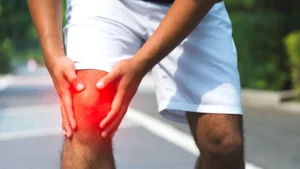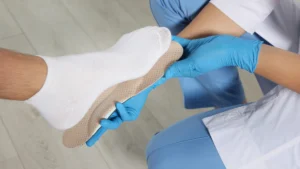Orthotics are imperative in managing the unique challenges posed by pes cavus, a condition characterized by a high arch in the foot. In this ultimate guide, you will discover seven effective steps to enhance your comfort and mobility through custom orthotics tailored to your specific needs. Whether you are new to orthotics or seeking to optimize their benefits, this guide will empower you with the knowledge to take control of your foot health and improve your overall well-being.
The Anatomy of Pes Cavus: A Closer Look at High Arches
Pes cavus, characterized by an exaggerated arch in the foot, alters the normal anatomy of your feet. The heightened arch results from an imbalance in the muscles, tendons, and ligaments, causing an inadequate ability to absorb shock and redistribute pressure evenly across the foot. You may notice that the weight falls primarily on the ball and heel, leading to discomfort and potential issues in other areas, such as the knees and hips. Understanding the specifics of this condition can aid in choosing effective solutions, including custom orthotics.
Diagnosing Pes Cavus: Signs and Symptoms
Diagnosing pes cavus generally involves a physical examination and an assessment of your foot’s structure. Common signs include visible high arches, discomfort or pain in the foot, and calluses on the ball or heel area due to uneven pressure distribution. You might find that certain types of footwear feel increasingly uncomfortable, and you may also experience cramps or spasms in your foot muscles. Identifying these symptoms early can lead to more effective management strategies.
The Impact on Foot Mechanics and Overall Health
Your foot mechanics are significantly affected by pes cavus, as the altered arch structure disrupts the natural biomechanics during walking and running. This can lead to an uneven gait, where your body compensates in other areas, potentially resulting in knee, hip, and lower back pain. Over time, the stress placed on these joints can escalate into more serious conditions, including osteoarthritis. You may find that corrective measures, such as custom orthotics, not only alleviate foot discomfort but also promote healthier movement patterns throughout your entire body.
A study published in the Journal of the American Podiatric Medical Association highlights the systemic effects of pes cavus, showing that individuals with this condition often report higher instances of lower limb issues, from plantar fasciitis to IT band syndrome. Properly diagnosing and managing your pes cavus with tailored orthotics can thus be crucial to maintaining overall health. Addressing the imbalances created by pronounced arches helps restore your natural gait, reducing strain on your knees and hips and enhancing your overall mobility and quality of life.
The Connection Between Pes Cavus and Custom Orthotics
Your pes cavus condition often leads to imbalances that affect the entire lower limb, making the use of custom orthotics a pivotal part of your comfort strategy. These devices help redistribute pressure across the foot, reducing pain and improving overall function. By addressing the unique structure of your feet, custom orthotics can effectively alleviate symptoms associated with pes cavus, allowing for better mobility and stability during daily activities.
How Custom Orthotics Address Structural Issues
Exercises such as toe curls, resistance band stretches, and calf raises can significantly improve strength and flexibility. Building these intrinsic muscles helps counteract the structural issues associated with pes cavus. Aim for a routine that balances strengthening and stretching to foster improved foot mechanics, which may lead to reduced discomfort over time. Gradually increasing the intensity of your workouts ensures that your feet adapt positively to the new regimen.
Step 4: Select the Right Footwear
Choosing appropriate footwear is imperative for managing pes cavus effectively, as it directly impacts your foot’s comfort and alignment.
Opt for shoes that provide ample arch support and cushioning, while avoiding styles that exacerbate your condition. Footwear should feature a wide toe box and a supportive heel to promote stability. Brands that offer customizable insoles can greatly benefit your experience, allowing you to enhance fit and comfort. Remember to try on shoes later in the day when your feet are more swollen, ensuring they accommodate you at their largest size.
Step 5: Utilize Orthotic Accessories for Enhanced Support
Supplementing your custom orthotics with additional accessories can offer further comfort and support as you manage pes cavus. Considеr using arch supports, heel cups, or metatarsal pads to provide targeted cushioning and relieve pressure on specific areas of your feet. These accessories can help to alleviate discomfort and prevent fatigue during prolonged activities. When deciding on these items, consult your specialist to ensure they align with your overall treatment strategy and complement your custom orthotics.
Step 6: Gradually Adapt to Your Custom Orthotics
Adjusting to your custom orthotics may take time, so gradual acclimatization is key to ensuring long-term comfort and success.
Start by wearing your orthotics for short periods, slowly increasing the duration as your feet become accustomed to the new support. This process allows your foot muscles and structures to adapt without causing excessive strain, minimizing the risk of discomfort. Be attentive to your body’s responses during this transition period, and take breaks as necessary to prevent fatigue.
Step 7: Monitor Progress and Adjust as Necessary
Regularly assessing your progress is vital in ensuring that your treatment plan remains effective for your pes cavus condition.
Keep track of any changes in pain levels, mobility, or overall comfort as you navigate your journey. Collaborate with your specialist to reassess your orthotics or explore new strategies if you notice lingering discomfort or new symptoms arising. Adjusting your approach allows for continued improvement and helps maintain an active lifestyle tailored to your specific foot health needs.
Transformative Mindset: Embracing Changes in Foot Health
Adopting a transformative mindset is vital for embracing the changes necessary to manage pes cavus effectively. Shifting your perspective on foot health can empower you to take proactive steps, leading to significant improvements in your overall well-being. Developing a positive outlook allows you to see your foot condition not as a limitation but as an opportunity to explore new practices and solutions, enhancing your comfort and quality of life.
Overcoming Anxiety About Foot Pain Management
Navigating the anxiety that often accompanies foot pain requires a blend of knowledge and self-compassion. Understanding your condition fully and finding resources that resonate with you can alleviate fears. Acknowledging that you aren’t alone in this struggle can also foster a supportive environment, reducing feelings of isolation and helping you take control of your foot health journey.
Researching Personal Success Stories for Inspiration
Finding inspiration through personal success stories can be a game changer in managing pes cavus. Looking into the journeys of others who have faced similar challenges reveals not just methods for relief but also a sense of community and resilience. These narratives highlight innovative approaches and the positive outcomes of perseverance, motivating you to keep pushing forward with your own foot health care.
Diving deeper into personal success stories can be incredibly uplifting. You’ll find individuals who once struggled with debilitating foot pain but transformed their lives through tailored interventions, including custom orthotics, physical therapy, and lifestyle adjustments. For instance, a runner may share how adapting their training and investing in supportive footwear allowed them to complete Edmonton’s annual marathon again. These anecdotes not only offer practical tips but also serve as reminders that change and improvement are possible, helping you to visualize your own victory over foot pain and reinforcing the belief that you can achieve a more comfortable and active lifestyle.
The Long-Term Benefits of Proper Foot Care
Proper foot care offers numerous long-term benefits that extend beyond mere comfort. By prioritizing the health of your feet, you can alleviate pain, enhance mobility, and significantly improve your overall quality of life. Establishing a consistent foot care routine can reduce the likelihood of complications associated with pes cavus, such as calluses, skin irritation, and joint problems. Taking this proactive approach fosters long-lasting wellness, which ultimately supports your active lifestyle and enables you to comfortably engage in daily activities.
How Addressing Pes Cavus Can Improve Quality of Life
Taking steps to address pes cavus can markedly enhance your quality of life. By utilizing custom orthotics tailored to your unique foot structure, you can experience reduced pain and discomfort associated with this condition. As a result, everyday activities such as walking, exercising, or standing for prolonged periods become more enjoyable and manageable. Improved foot alignment and stability not only relieve pressure on your muscles and joints but also promote better posture, contributing positively to your physical and mental well-being.
Preventing Future Foot Problems Through Consistent Care
Consistent foot care plays a significant role in preventing future foot problems, particularly for those with pes cavus. Regular check-ups with your podiatrist, combined with daily practices such as proper washing, moisturizing, and selecting suitable footwear, can significantly diminish the risk of developing complications. Staying proactive in your foot health can ensure that issues are identified early and addressed promptly, potentially saving you from more severe conditions that could arise from neglect.
Incorporating consistent care into your routine means actively monitoring your foot health and responding to any changes. Regularly performing foot exercises can strengthen muscles and improve flexibility, while proper nail trimming prevents ingrown toenails. In conjunction with wearing appropriate shoes and custom orthotics, you’ll create a solid defense against problems that arise from pes cavus. This holistic approach not only maintains your foot’s integrity but allows you to feel confident and capable in every step you take.
Seven Steps To Comfort With Pes Cavus Conlcusion
With these considerations, you can effectively navigate the journey towards comfort with pes cavus and custom orthotics. By understanding your condition, seeking professional guidance, and implementing the suggested steps, you will empower yourself to alleviate discomfort and enhance your quality of life. Embrace the process of finding the right orthotics tailored for your unique feet, and take proactive steps towards better foot health today.





